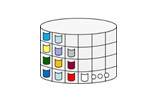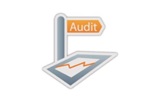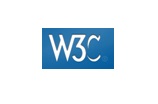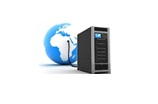(SCFS) is the product of many enhancements to the Microsoft SQL Server/.NET
stack — capabilities that are generic to any distributed Internet database system.
Implemented over 20+ year period of designing, developing (and supporting) custom database solutions to meet our Clients demanding and diverse industry
needs, SCFS
serves as the baseline for all custom Smart Client database solutions — to deliver
| |
 |
STANDARD FORM LAYOUTS & CONSTRUCTS |
- Pre-built Browse Forms, Add/Edit Forms with Filters, Detail Tabs
- Standard developer API to implement Save, Save & New, Save & Clone, other common create/edit functions
- User Interface best practices ensure consistency and ease-of-use
- Significant engineering efficiencies (lower cost to develop)
|
| |
|
 |
INTELLIGENT COMMUNCATION PAYLOAD |
- Full, bi-directional binary encoding of the communication payload
- Local client-side binary data caching controls, stored in memory, and/or persisted to disk
- Significantly reduced network traffic while improving application responsiveness, even over thin/slow network connections
- Data compression (Google Protobuf) greatly reduces network load resulting in much faster application operation and response times, and geared toward the return of large data sets
- Encryption easily activated and piggy-backed onto existing secure communications layer using pre-existing certificates while leveraging the resources of the web server
|
| |
|
 |
MULTI-TENANT DATABASE SCHEMA |
- Single, distributed database architecture capable of supporting multiple, discrete organizational data sets
- Organization data sets can be logically defined to support any type of enterprise boundary e.g. business units, office/plant locations, product lines, geographic or political regions, etc.
- Admin ability to associate/disassociate Users with select organizational data sets
- Admin ability to control access to select organization data sets to facilitate “roll-up” reporting and data analysis functions
- Firewall between organizational data sets — can be shown or hidden based on Users’ specific roles/privileges
- Cost effective — leverages single SQL database license and server investment to support enterprise-wide needs
- Scalable — provides underlying data model separation necessary to support SaaS subscription offerings from a single database instance
|
| |
|
 |
FLEXIBLE ROLE-BASED SECURITY FRAMEWORK |
- Flexible Administrative controls to define/manage user roles and associated privileges at the application module, form, field and data levels, with the ability to create complex configurations
- Business roles and associated privileges are 100% Admin controlled — no need for additional programming to accommodate changes as your organization evolves
- Roles integrated with multi-tenant database schema — users can have different roles/privileges based on organization
- Two-tier structure: SuperAdmin ability to establish enterprise-wide privileges, and authorize Admins to define and manage independent organization-level business roles and privileges
|
| |
|
 |
ROBUST SECURITY |
- Full data payload obfuscation, unintelligible to packet sniff
- Strong 1-way MD5 message-digest algorithm 128-bit cryptographic hash function, for sign-in passwords and other non-recoverable data types
- Strong 2-way MD5 with session-GUID key, for data types that need to be stored securely but recoverable (such as SSN#s)
- Fully compatible with standard secure communications (encryption/ authentication) using HTTPS (Hypertext Transfer Protocol over Secure Sockets Layer)
- User Access Credentialing, with password reset via email or security question/response
- Admin-defined User ID / password strength and specification: min/max length, caps, lower-case, special characters, numbers
- Admin-defined lock-out policy settings: X attempts and age expiration
- Single-sign-on integration e.g. Active Directory, OpenAuth, LDAP
|
| |
|
 |
AUTOMATED MAINTENANCE |
- Automated version detection and streaming updates eliminate the need to manage application updates (latest version always available)
- ClickOnce Install operates efficiently across Internet/Intranet security boundaries and firewalls — no need for unusual I/T intervention,
software/security policy modifications, or additional hardware changes
- Promotes clear role delegation between I/T and Developers — independent responsibilities, with little to no need to coordinate application updates/enhancements
|
| |
|
 |
LOCALIZATION / INTERNATIONALIZATION SUPPORT |
- Ability to localize the application interface on a per-form or application-wide basis
- Authorized end-user ability to redefine labels and text on forms
- Administrative edit control over system-wide error/warning and associated confirmation messages
- Language preference uses translations to redefine text and messages for users
- Ability for authorized users to set languages available, specific users’ language, and ability for users to change language
|
| |
|
 |
INTEGRATED PROJECT MANAGEMENT & SUPPORT TOOLS |
- ProjectCentral Ticket Management system fully-integrated with PCA development environment and testing tools
- Ability for authorized users to enter new request tickets, with automated screen capture, document attachments, and associated request details
- Admin ability to triage ticket requests e.g. visibility, status, priority
- Full Audit Log of all ticket changes
- Automated exception recovery handling and reporting — directly into the PM and engineering queues
|
| |
|
 |
BASIC AUDIT TRAIL |
- Integrated Session Monitor tracks End User statistics for every session, with filtering and search capabilities
- Connection speed/routing traceability, to ID user- or site-specific Internet connection issues
- Foundation Audit Trail that can be extended to support HIPAA-compliant system requirements
|
| |
|
 |
W3C STANDARDS COMPATIBLE |
- Proprietary web service, fully compliant with W3C definition
- WCF webservice supports HTTP/HTTPS/FTP
- Uses standard W3C HTTP 1.1 (Hypertext Transfer Protocol)
- Standard XML 1.0 (Extensible Markup Language) support
- Standard SOAP 1.2 (Simple Object Access Protocol)
- Fully compatible with standard secure communications (encryption/authentication) using HTTPS (Secure Sockets Layer)
- Compression with standard GZIP (GNU Zip, RFC 1952) or DEFLATE (ZLib, RFC 1950), fully compliant with HTTP 1.1 standard
|
| |
|
 |
HOSTING ENVIRONMENT INDEPENDENT |
- Single architecture can be deployed on-premises (self-hosted), with hosting provider (managed-hosted) or in cloud-based production environments
- On Premises, Microsoft Azure, Amazon AWS, SoftLayer, RackSpace compatible)
|
| |
|
 |
SMART CLIENT API |
- Smart Client libraries combine multiple database calls into a single server call, reducing development time and network traffic with increased application responsiveness
- Concise programming paradigm ensures high quality code reuse among different developers
- Seamless pass-through calls onto the server, providing server-side code execution
|